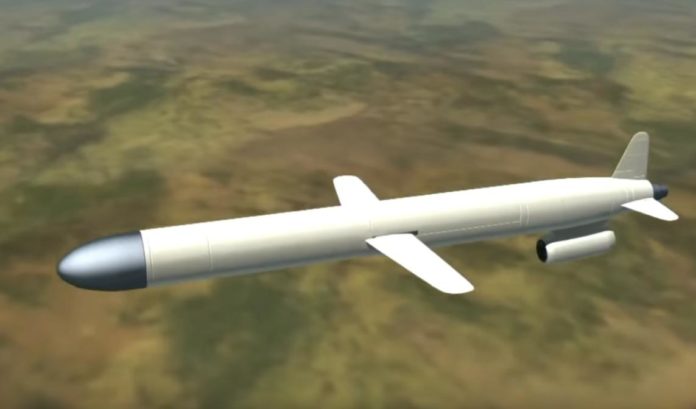Last night, the US Navy sent 59 Tomahawk missiles into a Syrian Air Force base. They were careful not to hit the warehouse that they are pretty sure contains the sarin-laden weapons that Assad has used on his own civilian population. The idea that Navy ships could fire dozens of missiles hundreds of miles and determine within a foot or two where the missiles would land was not considered a big deal.
It is. Just after the dawn of the nuclear age, the Air Force introduced the B-52 Stratofortress, an amazing piece of technology that has changed little since it was introduced in 1954. It is still in service, but the Air Force planned to obsolete the planes over the next few years.
The problem, according to the Air Force, was that high-altitude bombers were never designed for accuracy. It is hard to engage in pinpoint bombing from 35,000 feet. So the Air Force decided to spend $320 billion — real money, even by Pentagon standards — for a bunch of fighters that can fly in low and fast and deliver precision-guided munitions from low altitude. Bombing, the thinking went, would be taken over by jet fighters. Bombers would go away. Early in his term Donald Rumsfeld actually mothballed our bomber fleet, including the Darth Vader-compatible B1 and B2 Stealth planes.
Greg Easterbrook describes how unforeseen technology change proceeded to upend the logic drove the decision to abandon high altitude bombing:
“..unexpected technical breakthroughs resulted in extremely accurate munitions that can be dropped from high altitude by bombers, at less cost and risk than using low-flying fighters. The result has been that during the Afghanistan and second Iraq campaigns, most of the air punch has been delivered by a handful of the remaining bombers. Some 80 percent of the bombs dropped during the U.S. seizure of Afghanistan fell from bombers; the share dropped on Iraq since march 2003 is nearly as high. Though bombers have in this decade turned out to be far more important to U.S. military action than pentagon strategists expected, the government still plans to invest fantastic amounts of money in fighter planes that would be used mainly to drop bombs.
Bombs not only got cheaper (a cruise missile costs a million bucks, a JDAM about $30k), but bombs became unbelievably accurate. A B52 moving at 600 miles per hour six miles above ground can now hit a Taliban campfire every time. Not near the campfire — in the campfire. B52s now literally fly close air combat support — meaning that they can very reliably hit bad guys who are fighting near good guys.
 Nobody saw this coming. In World War II, B52s literally never hit anything more specific than a town. They could not hit railroads or bridges or roads. We firebombed enemy cities since that was about all we could count on hitting. By Vietnam, a B-52 could drop a load of ordinance to within 1,000 feet — enough to target buildings, but useless against tanks or bridges. By Kosovo, we were bombing to within a few feet. Now, unless the technology fails, bombs go exactly where they are told to go and are delivered from an altitude that cannot be reached by ground weapons. Cruise missiles can reportedly be programmed to select which window they fly into after traveling hundreds of miles just a few feet off the ground.
Nobody saw this coming. In World War II, B52s literally never hit anything more specific than a town. They could not hit railroads or bridges or roads. We firebombed enemy cities since that was about all we could count on hitting. By Vietnam, a B-52 could drop a load of ordinance to within 1,000 feet — enough to target buildings, but useless against tanks or bridges. By Kosovo, we were bombing to within a few feet. Now, unless the technology fails, bombs go exactly where they are told to go and are delivered from an altitude that cannot be reached by ground weapons. Cruise missiles can reportedly be programmed to select which window they fly into after traveling hundreds of miles just a few feet off the ground.
This level of accuracy combined with drones that deliver real-time information has huge military implications. These are surely much-debated in the Pentagon but little recognized in public. Precision means that low-level warfare is more tempting because it is technically more feasible. Impulse warfare, something our current Commander in Chief has a hard time resisting for good as well as evil, becomes much more feasible. Targeting individuals, including heads of state, becomes a chronic temptation. If nothing else, Donald Trump has surely disrupted Assad’s sleep patterns.
Often technology changes warfare in unforeseen ways. Cavalry officers did not expect to be replaced by tanks, tank commanders did not expect to be vulnerable to bombs and missiles, and bombers did not expect that the accuracy of their munitions would matter more than the accuracy of their airplanes. Usually the cost of bad assumptions is wasted money and lost battles. A modern military can, and I predict will, adjust more quickly.






